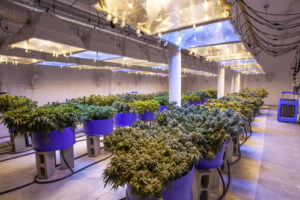
The nationwide legalization of marijuana could pose threats to America’s energy grid and the nation’s environmental goals, U.S. Rep. Buddy Carter (R-GA) told the Biden administration this week.
“As Congress debates whether to advance marijuana legalization, the American people must have a better understanding of the environmental costs of this rapidly growing industry,” wrote Rep. Carter and his colleague, U.S. Rep. Doug Lamborn (R-CO) in a Sept. 12 letter sent to the administration. “We must have a comprehensive view of where emissions and other pollution occurs, as they will likely only grow.”
Specifically, the lawmakers said they have “serious concerns” about the energy and resource-intensive nature of marijuana cultivation and its subsequent emissions, and called for more research on the industry’s rapidly growing demands on the nation’s energy systems, along with its effects on the environment, according to their letter, which was addressed to U.S. Energy Secretary Jennifer Granholm, U.S. Interior Secretary Deb Haaland, U.S. Energy Information Administration Administrator Joseph DeCarolis, and U.S. Environmental Protection Agency Administrator Michael Regan.
Rep. Carter and his colleague pointed out that the legalization of marijuana in several states has sharply increased the supply of marijuana products coming to market. In turn, marijuana cultivation operations have expanded to meet market demands, with 80 percent of cultivation occurring in indoor facilities to increase growth efficiency.
However, such indoor facilities also sacrifice energy efficiency, according to their letter.
For instance, in Massachusetts, indoor marijuana cultivation accounts for 10 percent of industrial electricity consumption statewide, while in Colorado, the energy consumption from marijuana cultivation is so great that its emissions are similar to levels resulting from trash collection and coal mining in the state, wrote the lawmakers.
“In fact, one study indicates that the marijuana industry accounts for more than one percent of electricity consumption nationwide, and research predicts that annual cannabis cultivation electricity demand will grow 65 percent during the next decade,” Rep. Carter and his colleague wrote.
Additionally, they cited an August 2016 report from the National Conference of State Legislatures, which said such indoor cultivation facilities also can have lighting intensities similar to hospital operating rooms, which are 500 times greater than recommended reading light levels, as well as 30 hourly temperature or fan speed air changes, which are 60 times the rate in a normal home.
Reps. Carter and Lamborn asked the administration for detailed responses to several questions, including how current marijuana legalization impacts state energy consumption and emission levels; how federal legalization of marijuana would affect national energy consumption and emission levels; and what the anticipated growth is of energy usage and emissions from the marijuana industry.



